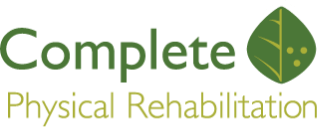Vestibular rehabilitation for balance is a specialized form of physical therapy designed to address inner ear issues, which can disrupt equilibrium. Vestibular dysfunction is more prevalent as one ages, approximately 35% of adults aged 40 years or older in the United States have experienced some form of vestibular dysfunction. If you’re among them, you’re not alone, and relief is possible.
Ready to get started with vestibular rehabilitation for balance and inner ear issues? Call our team at Complete Physical Rehabilitation today to learn more!
Understanding Inner Ear Issues and How To Recognize Them
Inner ear issues, medically known as vestibular disorders, encompass a range of conditions affecting the vestibular system responsible for balance and spatial orientation. The symptoms of vestibular disorders can significantly impact daily life and increase the risk of falls. Understanding the symptoms and root causes behind inner ear issues is key to effectively seeking relief and managing and treating these conditions.
Common Symptoms of Inner Ear Issues
Dizziness
- A sensation of lightheadedness, unsteadiness, or feeling faint.
Vertigo
- A spinning sensation where you or your surroundings seem to rotate or move, often triggered by head movements.
Imbalance
- Difficulty maintaining stable posture or walking without stumbling.
Nausea
- A sensation of queasiness or feeling sick to your stomach, sometimes accompanied by vomiting.
Difficulty Focusing
- Trouble concentrating or maintaining visual stability, leading to blurred vision or disorientation.
Causes of Inner Ear Issues
Benign Paroxysmal Positional Vertigo (BPPV)
- Caused by displacement of calcium crystals (otoconia) within the inner ear canals, leading to brief episodes of vertigo triggered by moving your head.
Vestibular Neuritis
- An inflammation of the vestibular nerve, typically due to a viral infection, causing sudden onset of severe vertigo and imbalance.
Meniere’s Disease
- Characterized by episodes of vertigo, fluctuating hearing loss, tinnitus (ringing in the ears), and a feeling of fullness in the affected ear. This condition is often related to abnormal fluid buildup in the inner ear.
Head Injuries
- Traumatic events such as concussions or skull fractures can damage the inner ear structures, leading to vestibular dysfunction.
Infections
- Viral or bacterial infections affecting the inner ear, such as labyrinthitis, can disrupt vestibular function and cause symptoms like vertigo and dizziness.
Age-related Degeneration
- As we age, natural degenerative changes can affect the inner ear structures and vestibular nerves, leading to decreased balance and increased susceptibility to vestibular disorders.
Understanding these common symptoms and causes is crucial for early detection and effective management of inner ear issues. If you’re experiencing any of these symptoms, contact our team at Complete Physical Rehabilitation today to seek evaluation and effective treatment.
How Vestibular Rehabilitation Can Help With Inner Ear Issues
Vestibular rehabilitation offers hope for those grappling with inner ear issues. Through personalized treatment plans, our team aims to alleviate symptoms, improve balance, and enhance overall quality of life.
During vestibular rehabilitation, you can expect a comprehensive assessment to pinpoint specific deficits followed by targeted exercises and techniques tailored to your unique needs. Treatment methods may include gaze stabilization exercises, balance training, habituation exercises, and repositioning maneuvers.
Call us at Complete Physical Rehabilitation to learn more about vestibular rehabilitation for balance and discover if this treatment is right for you.

